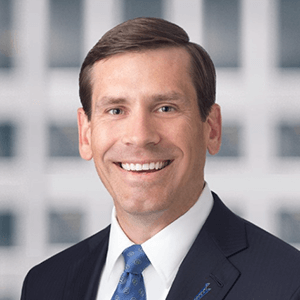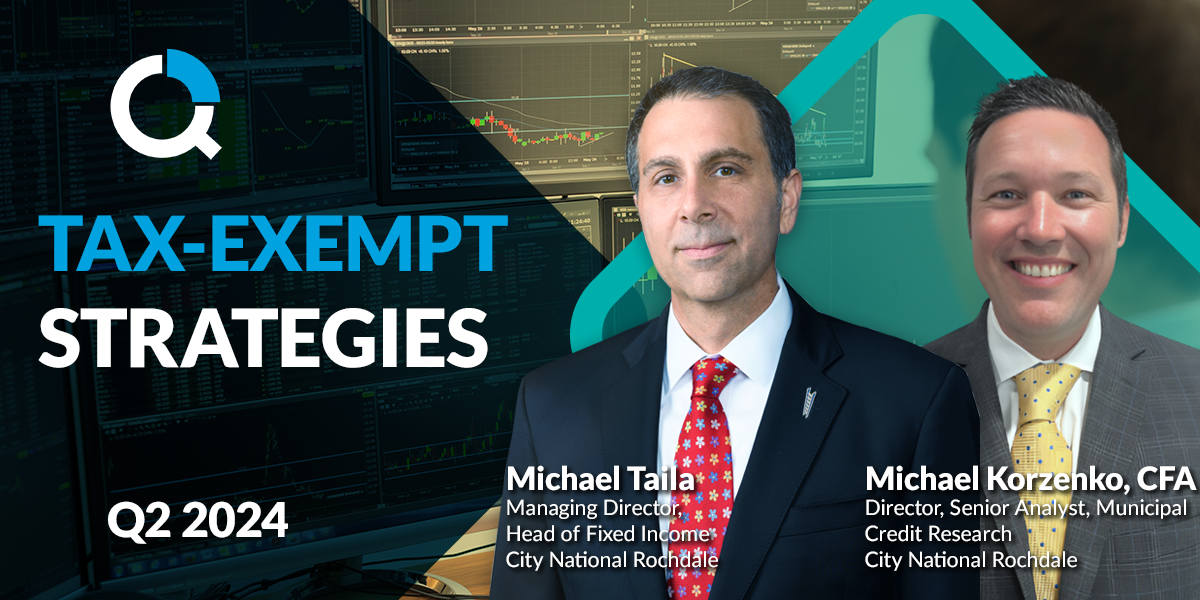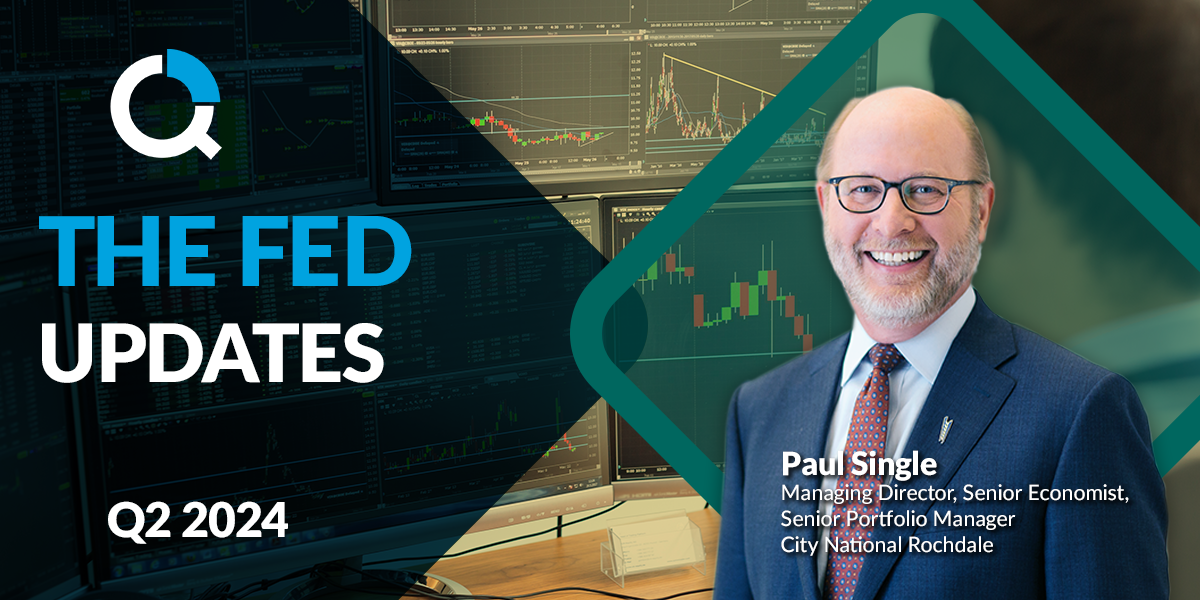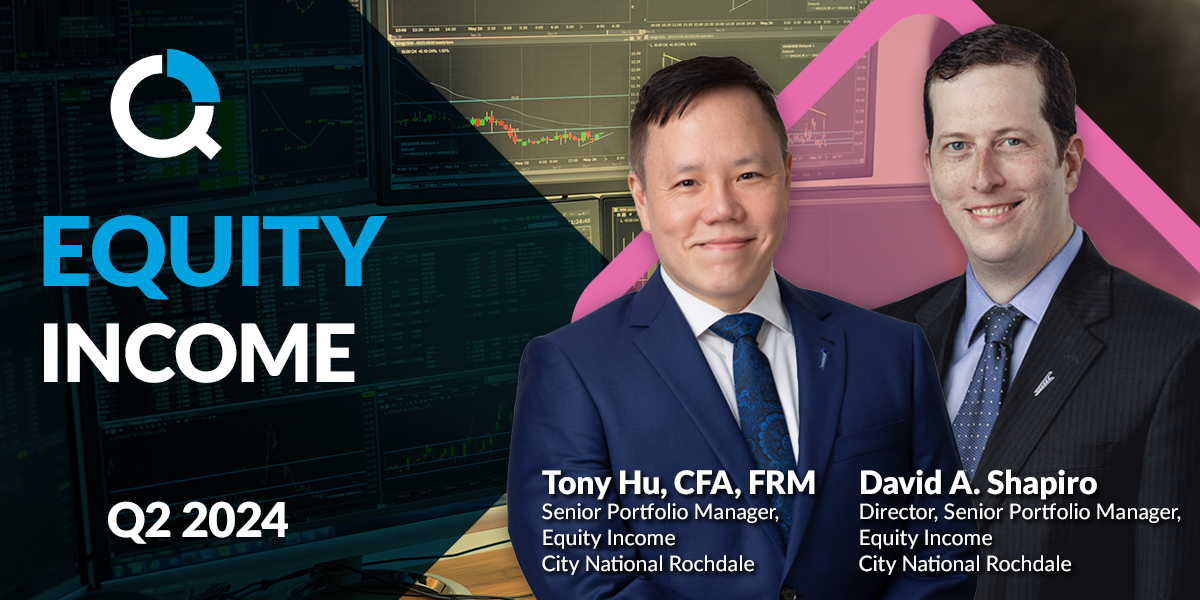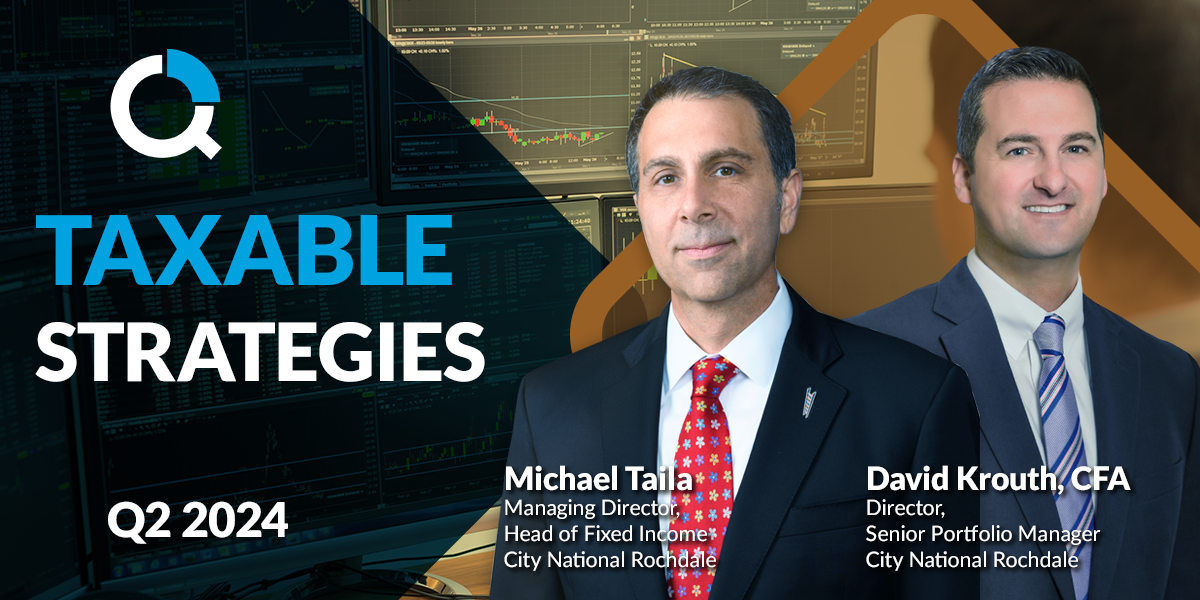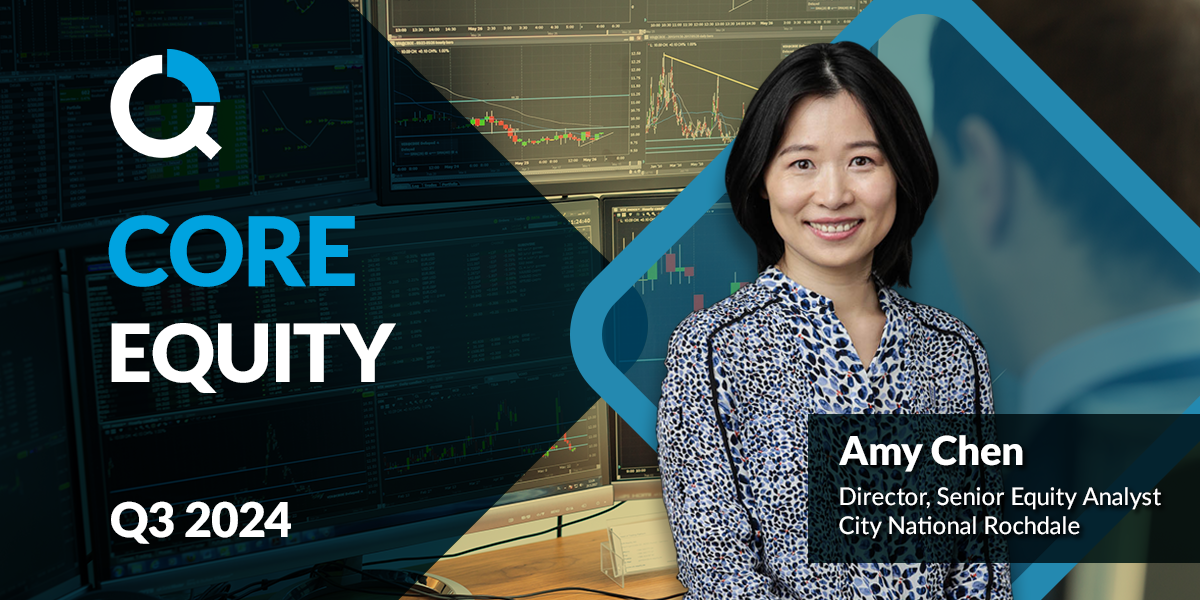
A Shift Beneath Our Feet: Reflections on a Fractured Global Economy
April 29, 2025
“In times of realignment, staying focused on fundamentals, valuation, and thoughtful risk management is not just prudent—it’s essential. The world has changed. But the principles of long-term investing remain a steady guide.”
The week beginning Monday, April 4, 2025, will be remembered not only for its dramatic price swings but for what it revealed about the evolving nature of the global economy. Following the Trump administration’s “Liberation Day” announcement—a sweeping tariff policy signaling a break from the era of globalization—markets responded with the most acute volatility in a decade.
What began with sharp equity losses quickly gave way to an astonishing rally. The S&P 500, Nasdaq and Dow all recorded double-digit swings within hours. Treasury yields lurched higher in a rare and disorienting sell-off, defying the usual script of flight-to-safety behavior. The sheer magnitude of these moves reminded many of past market crises, but the underlying cause this time was different. This wasn’t a collapse rooted in financial leverage or institutional fragility. It was a deliberate policy pivot, engineered and announced with unmistakable clarity.
This distinction matters deeply. The system isn’t broken, but it is being reoriented. And as investors, we must pause and consider what this new direction means—not just for this quarter or this year, but for the framework through which we interpret economic signals and allocate capital.
VOLATILITY OF A DIFFERENT KIND
The events of early April are not without precedent, but they belong to a rare category of market behavior: one in which extreme policy shifts unmoor expectations and reset pricing mechanisms. The constant shifts in equity prices in both directions were unsettling, not because they signaled panic but because they exposed how fragile the underlying assumptions had become.
This was not the type of capitulation seen in past liquidity crises. Trading volumes were elevated but not disorderly. Credit spreads widened modestly, but the credit system itself showed resilience. There were no signs of structural breakdown. Instead, the volatility seemed to reflect the struggle to price an economic system operating under fundamentally altered rules.
It is tempting to look for analogs in history to find comfort in precedent. But in this case, comparisons to 2008 or 2020 fall short. What we are experiencing now is not a crisis of confidence in markets or banks. It is a test of how flexible global economic relationships really are—and how quickly companies, consumers and policymakers can adapt to new rules.
THE TARIFF FRAMEWORK AND ITS LIMITS
The announced tariffs represent one of the most significant breaks from the global economic order in decades. Their scale and suddenness caught most by surprise. While some form of protectionist shift had been expected, the breadth of the measures—and the aggressive posture that accompanied them—suggest a deeper reevaluation of America’s economic strategy. Even though the full scale of planned reciprocal tariffs was dialed back, the remaining tariffs on China, which have been increased to 145%, and the reciprocal tariff floor of 10% will leave its imprint on the global economy.
The rationale behind this pivot rests on the desire to re-anchor manufacturing, reduce foreign dependency and recalibrate trade balances, but it’s clear that the main target of the administration is China. But regardless of the goal, the methods carry considerable cost. Tariffs, after all, are not absorbed in the abstract. They impose real friction on supply chains, raise input costs and, ultimately, burden consumers and businesses alike.
At City National Rochdale, we’ve revisited our assumptions accordingly. Using data from recent research, we estimate that each 10% tariff on Chinese goods alone reduces U.S. gross domestic product (GDP) by approximately 0.1%. Tariffs on Canada and Mexico add a further 0.2%-0.3% drag. When you incorporate a floor of 10% on the remaining trade partners, the cumulative impact could easily reach well above 1% of GDP.
This has prompted us to revise our 2025 growth forecast down from 2%-2.5% to a more cautious 0.75%-1.25%. We’ve similarly lowered our corporate earnings expectations and raised our inflation forecast. These changes reflect an acknowledgment that the policy landscape has changed and, with it, the path forward for growth.
In the near term, there is no indication that tariffs will move meaningfully lower. While there are growing calls for moderation, the political calculus does not currently support a full retreat. This heightens the importance of evaluating not just the direct effects of trade policy but also the broader psychological consequences on consumer behavior, corporate investment and capital flows.
MARKETS IN THE FOG: NAVIGATING WITHOUT A MAP
The challenge for investors now is not just analytical—it is philosophical. Traditional models and indicators are designed for a world of relative predictability. They assume that supply chains are stable, policy is incremental and shocks are transitory. That framework no longer holds.
What replaces it is less clear. While markets have already repriced significantly, this may not be the end of volatility. The same policy surprise that caused the sell-off could, in theory, trigger a powerful rally if reversed. But waiting on such a reversal and counting on its consistency may prove futile. Market participants must grapple with the uncomfortable truth that neither direction—up nor down—offers much visibility.
This is compounded by the current position of the Federal Reserve. With inflation still trending above target and employment data showing resilience, the Fed is unlikely to step in. While rate cuts are being priced into the market, we view this as premature. The central bank’s dual mandate does not extend to insulating investors from trade shocks. And until inflation moderates or labor weakens materially, policy support is unlikely.
Meanwhile, tariff negotiations are muddied by a fundamental lack of trust. The global trade system is built on relationships, and those relationships are now under stress. Even if certain countries were willing to make concessions, the tone and tactics of recent policy shifts have made it politically difficult for counterparts to engage. This creates a high-stakes environment in which missteps could escalate tensions further and in which positioning too aggressively in either direction exposes portfolios to outsized risk.
A SIX-MONTH HORIZON: EXPECTATION MEETS ADJUSTMENT
Looking ahead, the path will be shaped by how businesses and consumers adjust to the new cost structures introduced by tariffs—and whether policymakers show any signs of moderation.
At City National Rochdale, we’ve incorporated this into our Speedometer indicators, which assess the underlying health of economic and market conditions:
- Monetary Policy is no longer a tailwind, reflecting our view that the Fed is on hold—watching inflation carefully but not poised to cut.
- U.S. Economic Outlook is now more cautious, with growth expectations lowered and downside risks tied directly to trade drag.
- Consumer Sentiment and Spending have weakened. Survey data shows rising anxiety around inflation and policy direction. Real spending has softened, despite income gains, suggesting a psychological retrenchment.
- Labor Markets remain relatively firm but are beginning to reflect the ripple effects of uncertainty, particularly in sectors tied to federal spending and exports.
- Corporate Profits are under pressure. Margins are being squeezed by higher costs, and early guidance from companies suggests a more subdued earnings season ahead.
In sum, the next six months are likely to be defined by uncertainty and recalibration. Investors should not expect immediate clarity. But that does not mean opportunity is absent.
THE LONG VIEW: VALUATION, REPUTATION AND THE REALIGNMENT AHEAD
Moments like this challenge our assumptions. They demand not just analytical rigor but reflection.
We are living through a period in which the pillars of the global economy are being reexamined. The shift away from trade liberalization toward economic insulation is not just a U.S. story. It has implications across continents and sectors. Corporations must now adapt to an environment in which the rules are changing faster than business cycles can adjust.
One underappreciated consequence is reputational. The U.S. has long benefited from a perception of reliability—economic decisions grounded in rules, not rhetoric. That reputation is now under scrutiny. Foreign investors and trading partners are watching closely, and their response will shape not only capital flows but long-term trust.
At the same time, dislocation breeds opportunity. When prices fall sharply in response to external shocks rather than systemic collapse, markets often overcorrect. Today’s environment, while uncomfortable, has created more attractive valuations across a range of asset classes. The key is discernment. Not all assets are cheap for good reason. But for those with a long-term horizon, the repricing we are witnessing is welcome.
We urge caution but not paralysis. This is not the time to abandon discipline. It is the time to apply it with greater clarity. Risk must be measured. Positioning must be intentional. But we are not standing at the edge of a cliff. We are navigating through unfamiliar terrain.
Markets will adapt, as they always do. The global economy will recalibrate. And thoughtful investors—those who understand that opportunity is often disguised as discomfort—will be rewarded not for predicting the path but for preparing for its many turns.
Important Information
The views expressed represent the opinions of City National Rochdale, LLC (CNR) which are subject to change and are not intended as a forecast or guarantee of future results. Stated information is provided for informational purposes only, and should not be perceived as personalized investment, financial, legal or tax advice or a recommendation for any security. It is derived from proprietary and non-proprietary sources which have not been independently verified for accuracy or completeness. While CNR believes the information to be accurate and reliable, we do not claim or have responsibility for its completeness, accuracy, or reliability. Statements of future expectations,estimates, projections, and other forward-looking statements are based on available information and management’s view as of the time of these statements. Accordingly, such statements are inherently speculative as they are based on assumptions which may involve known and unknown risks and uncertainties. Actual results, performance or events may differ materially from those expressed or implied in such statements.
All investing is subject to risk, including the possible loss of the money you invest. As with any investment strategy, there is no guarantee that investment objectives will be met, and investors may lose money. Diversification may not protect against market risk or loss. Past performance is no guarantee of future performance.
© 2025 City National Bank. All rights reserved.
Index Definitions
S&P 500 Index: The S&P 500 Index, or Standard & Poor’s 500 Index, is a market-capitalization-weighted index of 500 leading publicly traded companies in the US It is not an exact list of the top 500 US companies by market cap because there are other criteria that the index includes.
Bloomberg Municipal Bond Index: The Bloomberg US Municipal Bond Index measures the performance of investment grade, US dollar-denominated, long-term tax-exempt bonds.
Bloomberg Municipal High Yield Bond Index: The Bloomberg Municipal High Yield Bond Index measures the performance of non-investment grade, US dollar-denominated, and non-rated, tax-exempt bonds.
Bloomberg Investment Grade Index: The Bloomberg US Investment Grade Corporate Bond Index measures the performance of investment grade, corporate, fixed-rate bonds with maturities of one year or more.
The Bloomberg Magnificent 7 Total Return Index: Bloomberg Magnificent 7 Total Return Index is an equal-dollar weighted equity benchmark consisting of a fixed basket of 7 widely-traded companies classified in the United States and representing the Communications, Consumer Discretionary and Technology sectors as defined by Bloomberg Industry Classification System (BICS).
Nasdaq is a global electronic marketplace for buying and selling securities. Its name was originally an acronym for the National Association of Securities Dealers Automated Quotations.
The Dow Jones Industrial Average (DJIA) tracks thirty of America’s biggest and most established companies, acting like a quick temperature check of the U.S. economy.
The MSCI USA Large Cap Index is designed to measure the performance of the large cap segments of the US market. The index covers approximately 70% of the free float-adjusted market capitalization in the US.
The Bloomberg Investment Grade Corporate Bond Spreads refer to the spreads between investment grade, fixed-rate, taxable corporate bonds.
BVAL Municipal AAA Benchmark is a municipal bond benchmark. It provides a 5% coupon benchmark yield curve for high-quality US municipal bonds with an average rating of “AAA” from Moody’s and S&P.
The 10-year BVAL AAA municipal treasury index compares the yield on a AAA rated municipal bond to that of a Treasury before factoring in the effect of taxes.
The Morningstar LSTA US Leveraged Loan 100 Index is designed to measure the performance of the 100 largest facilities in the US leveraged loan market.
The ICE BofA Diversified High Yield US Emerging Markets Corporate Plus Index tracks the performance of US dollar denominated below investment grade emerging markets non-sovereign debt publicly issued in the major domestic and eurobond markets.
The Palmer Square CLO Senior Debt Index is a rules-based observable pricing and total return index for CLO debt for sale in the United States, rated at the time of issuance as AAA or AA (or an equivalent rating).
The Russell 3000 is a broad equity index composed of the 3,000 largest U.S. listed stocks, representing more than 95% of the investable American stock market.
The MSCI ACWI ex USA Index captures large and mid cap representation across Developed Markets (DM) countries (excluding the US) and Emerging Markets (EM) countries. The index covers approximately 85% of the global equity opportunity set outside the US.
Definitions
The “core” Personal Consumption Expenditures (PCE) price index is defined as prices excluding food and energy prices. The core PCE price index measures the prices paid by consumers for goods and services without the volatility caused by movements in food and energy prices to reveal underlying inflation.
A leveraged loan is a type of loan that is extended to companies or individuals that already have considerable amounts of debt or poor credit history.
Yield to worse (YTW) is the lowest potential yield that an issuer can pay on a bond without defaulting.
The Magnificent 7 refers to a group of major tech companies with stock growth that far outpaced the high-performing S&P 500 in recent years. Coined in 2023, the group consists of Alphabet, Amazon, Apple, Meta Platforms, Microsoft, Nvidia, and Tesla.
© 2025 City National Bank. All rights reserved.
Non-deposit investment Products are: • not FDIC insured • not Bank guaranteed • may lose value
Stay Informed.
Get our Insights delivered straight to your inbox.
Read more of this month's Quarterly Update below:
Put our insights to work for you.
If you have a client with more than $1 million in investable assets and want to find out about the benefits of our intelligently personalized portfolio management, speak with an investment consultant near you today.
If you’re a high-net-worth client who's interested in adding an experienced investment manager to your financial team, learn more about working with us here.
